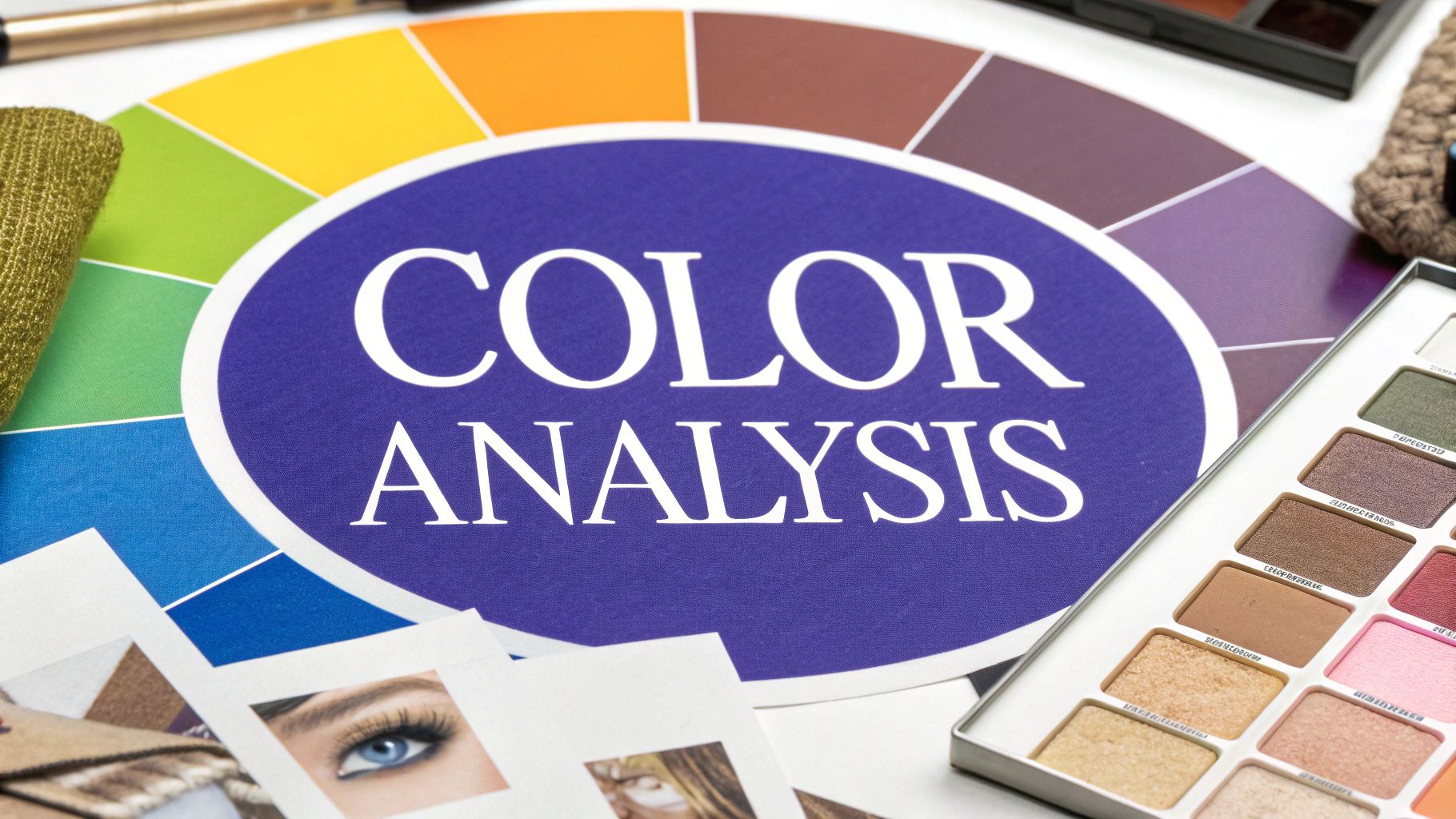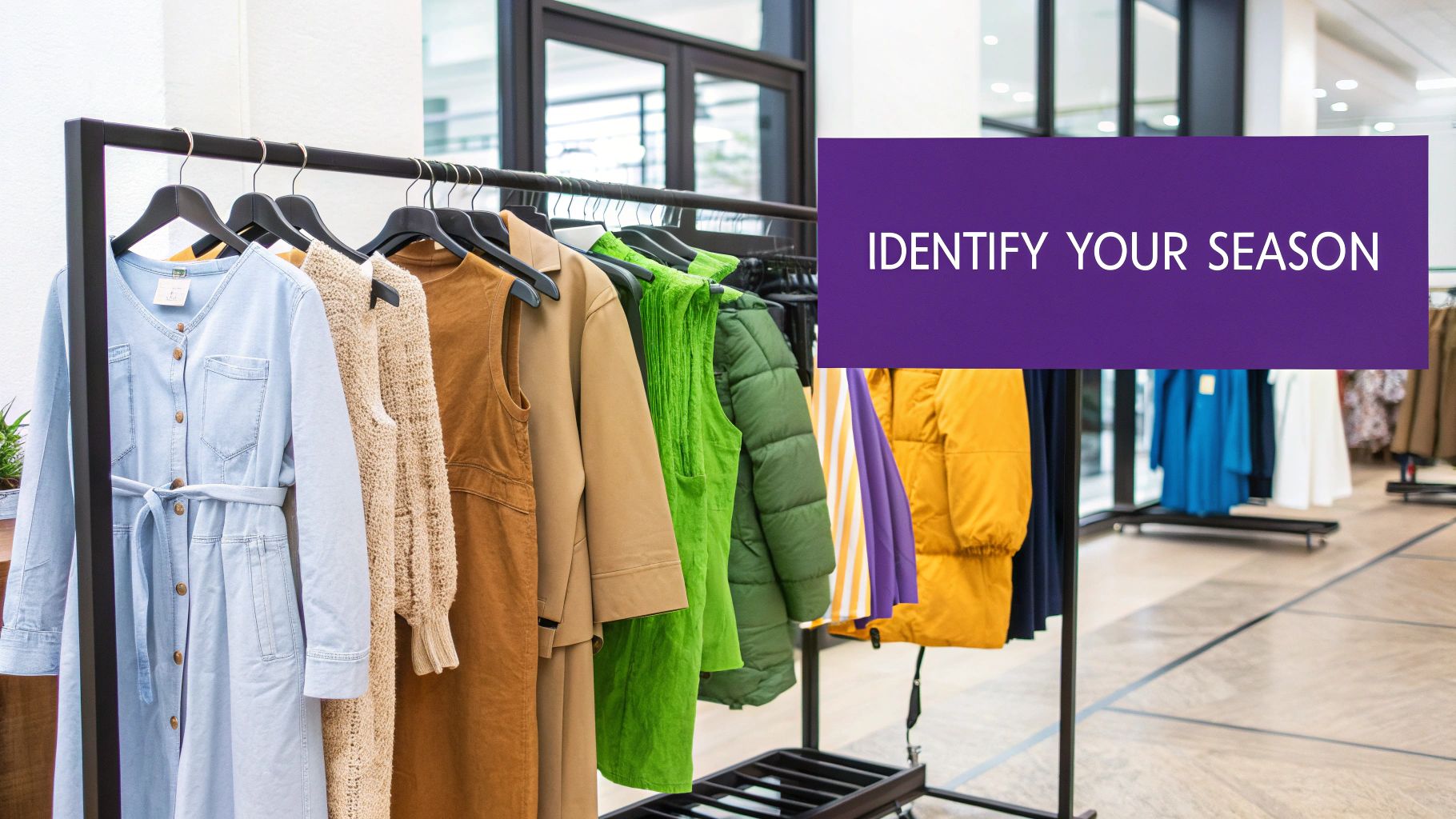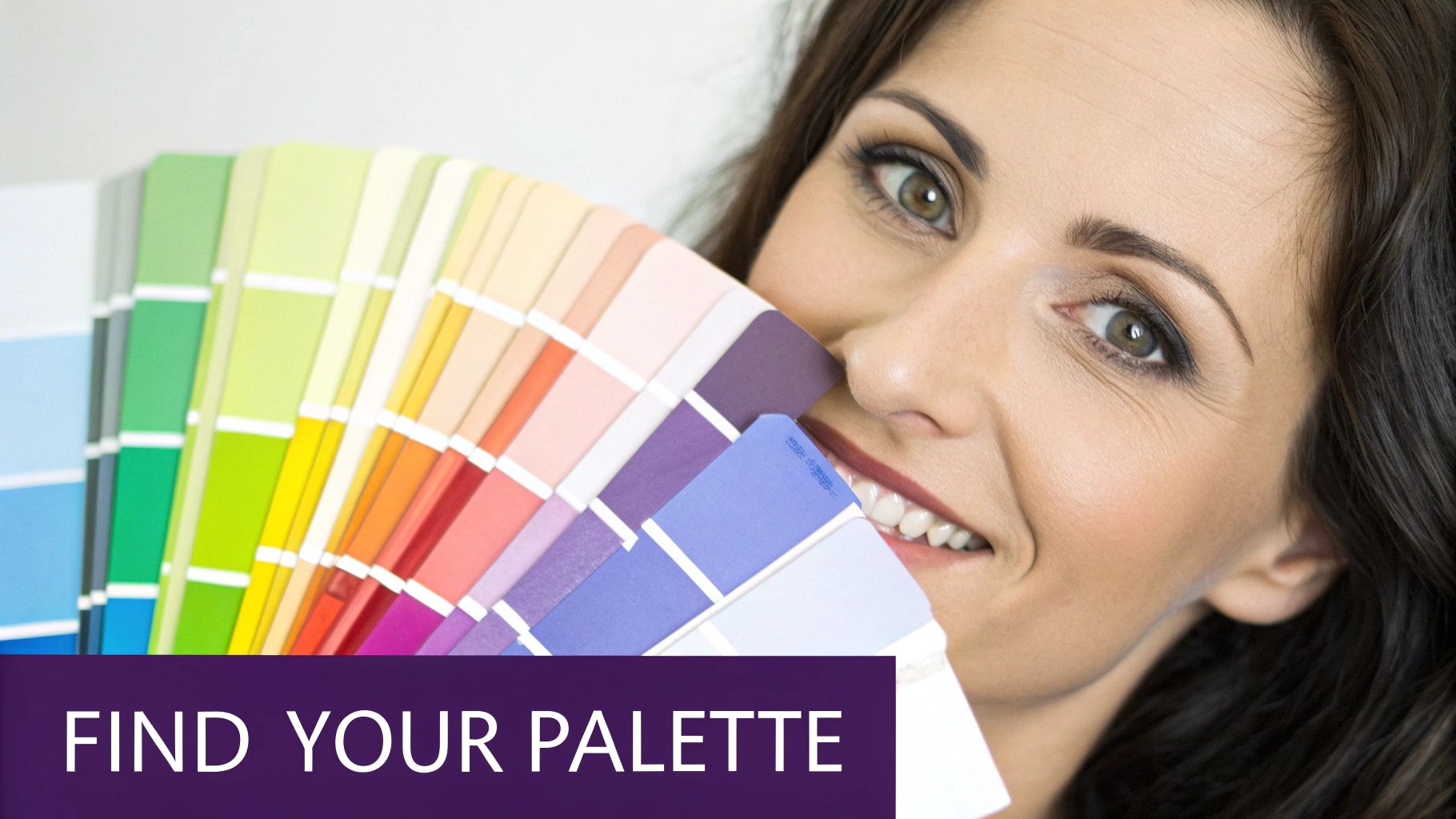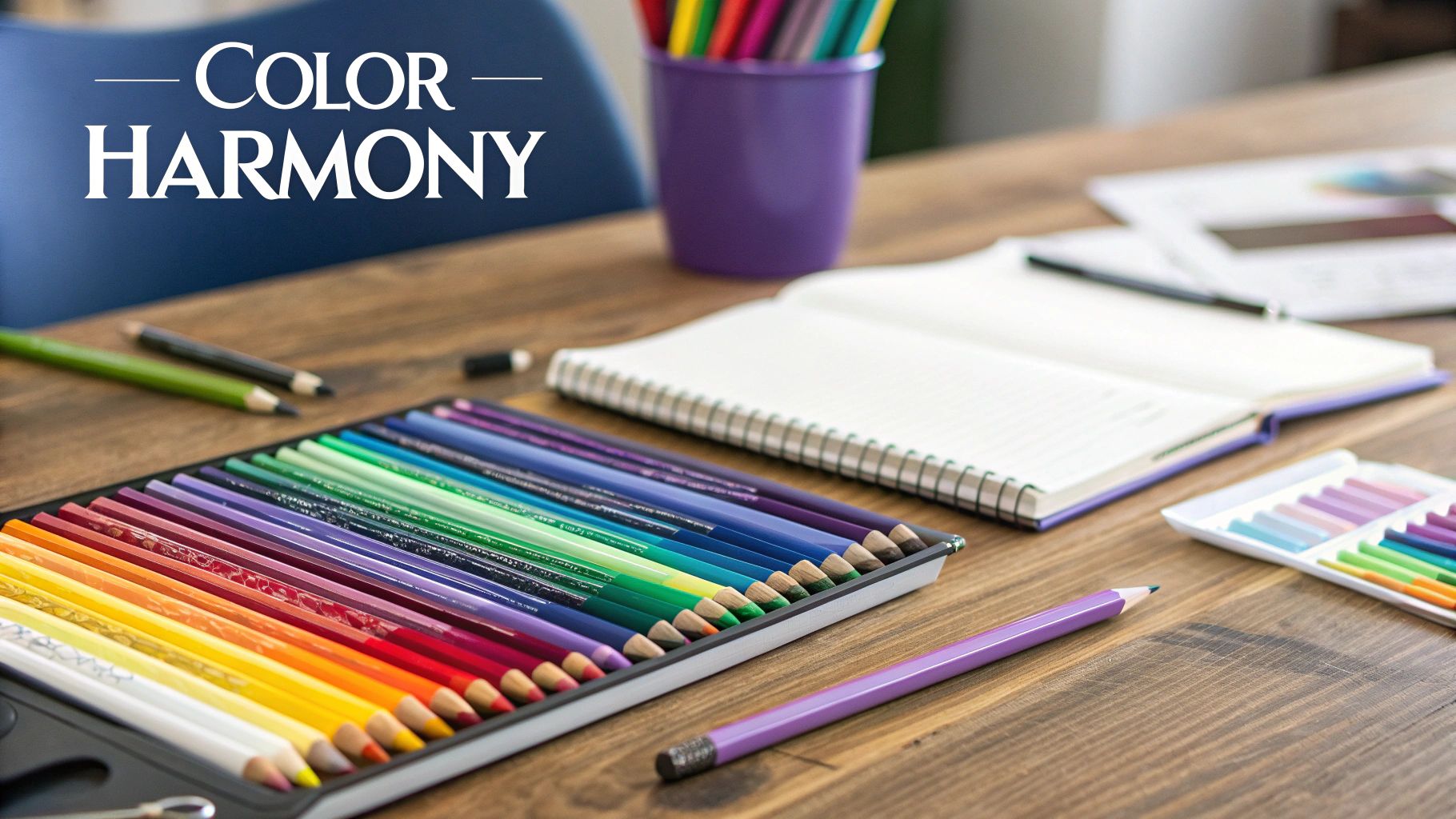
The Complete Guide to Seasonal Color Analysis: Transform Your Style with Expert Color Theory
By Emma Johnson - 8/10/2025
The Evolution and Science Behind Seasonal Color Analysis

People have long been fascinated by finding the perfect colors to enhance their natural appearance. The idea that certain colors work better with our individual features has become a widely accepted approach to personal styling.
Seasonal color analysis, also called personal color analysis, first emerged in the early 1900s. But it wasn't until the 1980s that this concept really took off. The release of Carole Jackson's book Color Me Beautiful in 1980 brought the four-season color system into mainstream fashion. Jackson organized people into Spring, Summer, Autumn, and Winter categories, each with their own ideal color palette. Her work suggested that wearing the right colors could improve appearance and confidence. Learn more about the historical development of this approach in this detailed overview of color analysis history.
Core Principles of Seasonal Color Analysis
The system works by analyzing three key elements:
- Undertone: The natural hue beneath your skin surface - typically warm (yellow/golden), cool (pink/blue), or neutral
- Value: How light or dark colors appear against your skin
- Chroma: The intensity of colors - from soft and muted to bright and vivid
These elements help determine which colors will look most natural and flattering on an individual.
The Twelve Seasons and Modern Advancements
The original four-season system has expanded to include twelve distinct categories for more precise color matching. This allows for finer distinctions between different colorings and provides more specific guidance.
New technology has made color analysis more accessible than ever. AI-powered tools can now analyze facial features to suggest optimal color palettes, offering a modern alternative to traditional in-person consultations. This combines the established principles of color theory with advanced digital analysis for personalized recommendations.
Mastering the Four Seasonal Color Palettes
Color analysis helps people find their most flattering colors based on their natural features. The system divides people into four main seasons - Spring, Summer, Autumn, and Winter. Each season corresponds to a specific set of colors that work well with certain skin tones, hair colors, and eye colors.
Decoding the Spring Palette
People with Spring coloring have warm undertones and look best in bright, clear colors. Think fresh flowers blooming in early spring. Spring types often have light golden or strawberry blonde hair, warm-toned skin with a peachy glow, and light eyes. Their best colors include sunny yellow, coral pink, bright turquoise, and vibrant green. These colors create an energetic, fresh look.
Exploring the Summer Palette
The Summer palette features cool undertones and soft, muted colors. Picture a misty summer morning or pale pink roses. Summer types typically have ash blonde or light brown hair, cool-pink skin, and blue, green or gray eyes. Their most flattering colors are powder blue, soft pink, light purple, and gentle gray. These colors create an elegant, refined appearance.
Unveiling the Autumn Palette
Autumn colors have warm undertones and deep, rich earth tones. Think of fall foliage and dark wood. Autumn types often have golden-toned skin, auburn or brown hair, and brown or green eyes. Their best colors include rusty orange, olive green, chocolate brown, and golden yellow. These colors create a warm, grounded look.
Embracing the Winter Palette
The Winter palette features cool undertones and bold, dramatic colors. Picture fresh snow and jewel tones. Winter types usually have fair skin with cool or blue undertones, dark hair, and bright eyes. Their most flattering colors are ice blue, bright pink, emerald green, and pure white. These colors create a striking, powerful effect. The seasonal color analysis system has gained new popularity on TikTok, where #coloranalysis has over 1.2 billion views. The traditional four-season approach now includes sub-categories like deep winter and bright spring. Learn more about seasonal color analysis. You might find this helpful: How to master your perfect palette.
Practical Applications of Seasonal Palettes
Knowing your seasonal palette helps you choose the most flattering clothes, makeup and accessories. Wearing colors that match your natural features can make you look healthier and more vibrant. For example, a Spring type may find coral lipstick brightens their face, while a Summer may notice lavender eyeshadow makes their eyes pop. Building a wardrobe around your seasonal colors creates a cohesive style that highlights your natural beauty and helps you feel more confident.
Navigating Professional Color Analysis Services
A professional seasonal color analysis is an excellent way to enhance your personal style and appearance. Understanding what to expect and how to select a qualified consultant will help you get the most value from this service. Let's explore the key aspects of working with color analysis professionals.
Choosing the Right Color Analyst
The foundation of a great color analysis experience starts with finding a skilled consultant. Look for professionals who have formal training and certification from established organizations. Read client reviews and testimonials to gauge their expertise and approach. Consider their experience level and knowledge of different color systems - some work with the classic four-season method while others use expanded systems with twelve or sixteen seasons.
What to Expect During Your Consultation
During your session, the analyst will perform draping - placing different colored fabrics near your face to identify your most flattering colors. They'll assess your undertone, value, and chroma to determine your seasonal color type and specific palette. Major companies like Colour Me Beautiful and House of Colour charge around $285 for a professional analysis that includes both color categorization and a personalized palette. Learn more about the professional color analysis industry here.
Maximizing Your Investment
To get accurate results, arrive at your appointment with a clean face without makeup. Your analyst will provide you with a personalized color palette, usually in the form of fabric swatches or a digital guide. This tool helps you make smart choices about clothing, makeup and accessories. Most analysts also offer practical advice for incorporating your new colors into your existing wardrobe and future purchases.

Long-Term Benefits of Professional Analysis
A professional color analysis provides lasting value beyond the initial consultation. Understanding your most flattering colors helps you build a wardrobe that consistently makes you look and feel confident. This knowledge simplifies shopping decisions, reduces wardrobe mistakes, and helps you spend money more effectively on pieces that work together. With your color profile as a foundation, you can explore new styles while staying true to the shades that enhance your natural features.
Mastering DIY Color Analysis Techniques
Learning DIY color analysis gives you the ability to explore and understand your best colors on your own. By focusing on key elements like undertone, value, and chroma, you can gain valuable insights into your personal color palette without professional analysis.
Evaluating Your Undertone
Start by checking your inner wrist veins. Blue or purple veins point to a cool undertone, while green veins indicate a warm undertone. Veins that appear bluish-green suggest a neutral undertone, meaning you can wear both warm and cool colors well. For more details, check out: How to master understanding skin undertone.
Identifying Your Contrast Level
Your contrast level is the difference between your skin, hair, and eye colors. People with dark hair and light skin have high contrast and look great in bold color combinations. Those with similar hair, skin and eye colors have low contrast and shine in softer, more harmonious color schemes. This helps guide the intensity of colors that work best for you.
Determining Your Seasonal Characteristics
Once you know your undertone and contrast, you can identify your season. Warm undertones typically fall into Spring or Autumn, while cool undertones suggest Summer or Winter. Springs and Winters tend to have clear, bright coloring, while Summers and Autumns appear softer and more muted. Your value - how light or dark your features are - also matters. Light features often indicate Spring or Summer, while deeper coloring points to Autumn or Winter.
Utilizing Digital Tools and Resources
Many online tools can help analyze your colors. While these tools provide a starting point, combine them with real-world testing using fabric draping in natural light. Watch how different colors affect your appearance - the best ones will make your skin glow, your eyes brighter, and your overall look more balanced and healthy.
Troubleshooting and Building Your Skills
It's normal to find self-analysis challenging at first. Join online color analysis communities to get feedback and tips from others. Take photos in different colors and share them for constructive input. The more you practice observing how colors interact with your features, the better you'll become at identifying your most flattering shades. With time and experience, DIY color analysis becomes a practical skill for improving your personal style.
Creating Your Signature Wardrobe Through Seasonal Color Theory

Your seasonal color palette forms the foundation for building a wardrobe that brings out your best features. By thoughtfully applying color theory principles, you can create a collection of clothes that makes you look and feel amazing. The key is selecting pieces that work in harmony with your natural coloring.
Decluttering and Building a Foundation
Start by going through your closet and removing items that don't match your seasonal palette. For instance, if you're a Summer, warm orange tones likely aren't doing you any favors. Focus on building up neutral basics that align with your season - these will be your most-worn pieces. Some examples:
- Soft Autumn: Rich brown cardigans, cream blouses
- True Winter: Charcoal pants, crisp white shirts
Working with Current Colors
Your seasonal palette doesn't mean you can't enjoy trendy colors. The trick is using them wisely. If you're a Bright Spring wanting to try this season's hot pink, use it in a scarf or accessory while keeping your main outfit in your signature warm tones. This lets you participate in trends while staying true to what works best for you.
Developing Your Style
With your foundation pieces in place, experiment with combinations within your season that reflect your personal taste. Consider your daily activities and style preferences:
- Soft Summer: Flowing lavender dress + delicate silver jewelry
- Deep Autumn: Burnt orange blazer + forest green blouse
These outfits become your signature looks - reliable combinations you know work perfectly.
Making Everything Work Together
One major benefit of a color-coordinated wardrobe is how easily pieces mix and match. This makes getting dressed simpler and helps you get more wear from fewer items. A Clear Winter, for example, can go from a navy suit at work to evening drinks by swapping in a bright magenta top and statement necklace.
Adding Visual Interest
Don't shy away from patterns and textures - just choose ones featuring colors from your seasonal palette:
- True Spring: Floral prints with bright pink and green
- Deep Winter: Bold geometric patterns in black and white
When patterns align with your best colors, they add depth and interest while maintaining harmony. The result is a wardrobe that looks pulled-together and makes you feel confident every day.
Elevating Your Beauty Game with Seasonal Color Knowledge

Knowing your seasonal color palette is one of the most powerful tools for enhancing your natural beauty. When you understand which colors work best for you, you can make informed choices about makeup and hair colors that bring out your best features. Think of it as having a personalized beauty guide that helps your skin glow and your eyes pop.
Makeup Selection Based on Seasonal Colors
The foundation of great makeup starts with, well, foundation. The key is matching your undertone - warm, cool, or neutral - to create a flawless base. For example, if you're an Autumn, look for foundations with golden undertones. Summer types will shine in foundations with pink or blue undertones.
Eye and lip colors can make a dramatic difference. Spring types look fantastic in bright, warm shades like coral and turquoise. Winter types, with their striking contrasts, excel in rich jewel tones - think emerald green and sapphire blue. When you stick to colors that match your season, your features naturally stand out instead of fighting against your coloring.
Hair Color and Your Seasonal Palette
Your hair color choice can completely change how you look. Understanding your undertone and contrast level helps guide you to the most flattering shades. An Autumn with warm, muted coloring might look stunning in rich auburn or chestnut brown. A cool, high-contrast Winter could rock jet black or icy platinum blonde. Learn more about how your natural coloring affects your choices: How eye and hair color impacts personal color analysis.
Techniques for Everyday and Special Occasion Looks
Your seasonal colors can guide both daily and dressy makeup looks. For everyday wear, use softer shades from your palette to enhance your natural beauty. When it's time to dress up, try bolder colors while staying within your season's range. A Summer might create a beautiful smoky eye using soft grays and lavenders, while a Spring could make a statement with a vibrant coral lip.
The Power of Personalized Color
Getting to know your seasonal color analysis opens up new possibilities in your beauty routine. Rather than strict rules, think of it as a helpful framework for discovering what makes you look your absolute best. The reward? Feeling more confident and radiant every time you look in the mirror.
Want to find your perfect colors? Try AI Color Analysis to get a detailed report about your skin undertone, color season, and personalized style tips. Start your color journey today with AI Color Analysis.
Article created using Outrank
Take your style to the next level with a professional analysis
You already know the theory. Now discover exactly which colors and styles enhance your personal image.
Loading...
Complete PDF report in less than 5 minutes
Your color season and personalized palette
Specific makeup and clothing recommendations
Based on professional color analysis
One-time investment:
One-time payment, no subscriptions. Instant access.